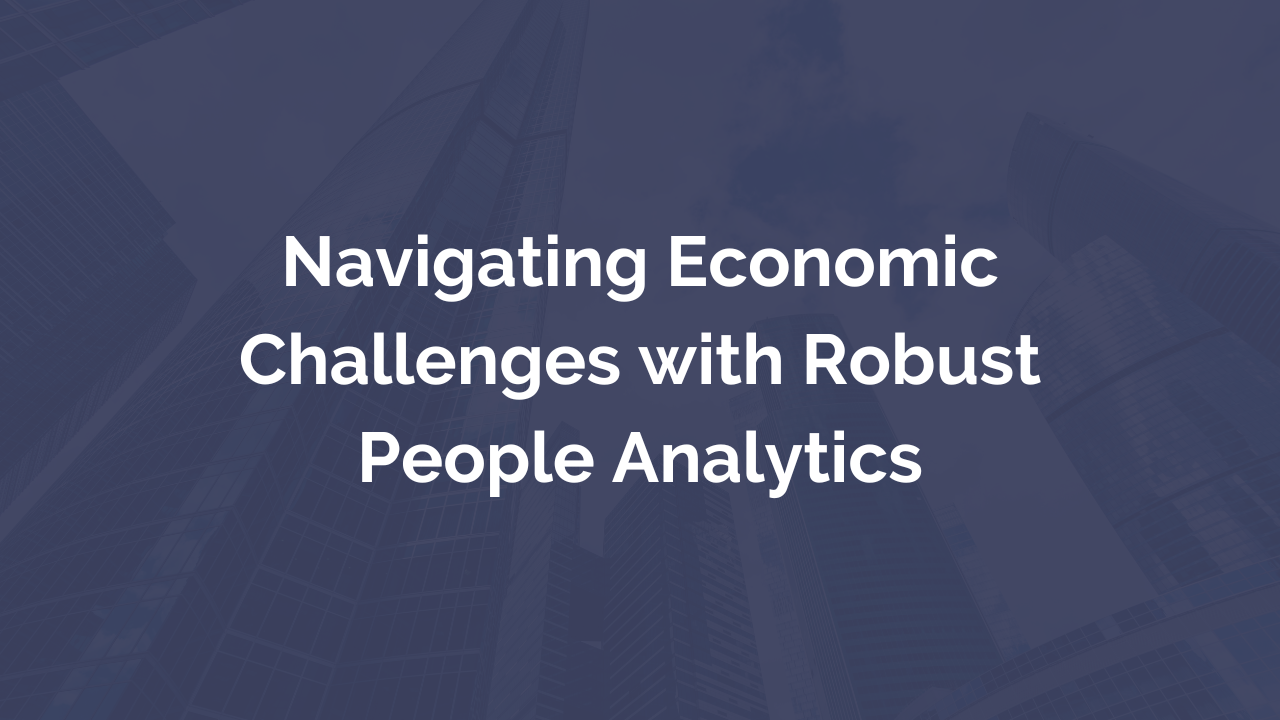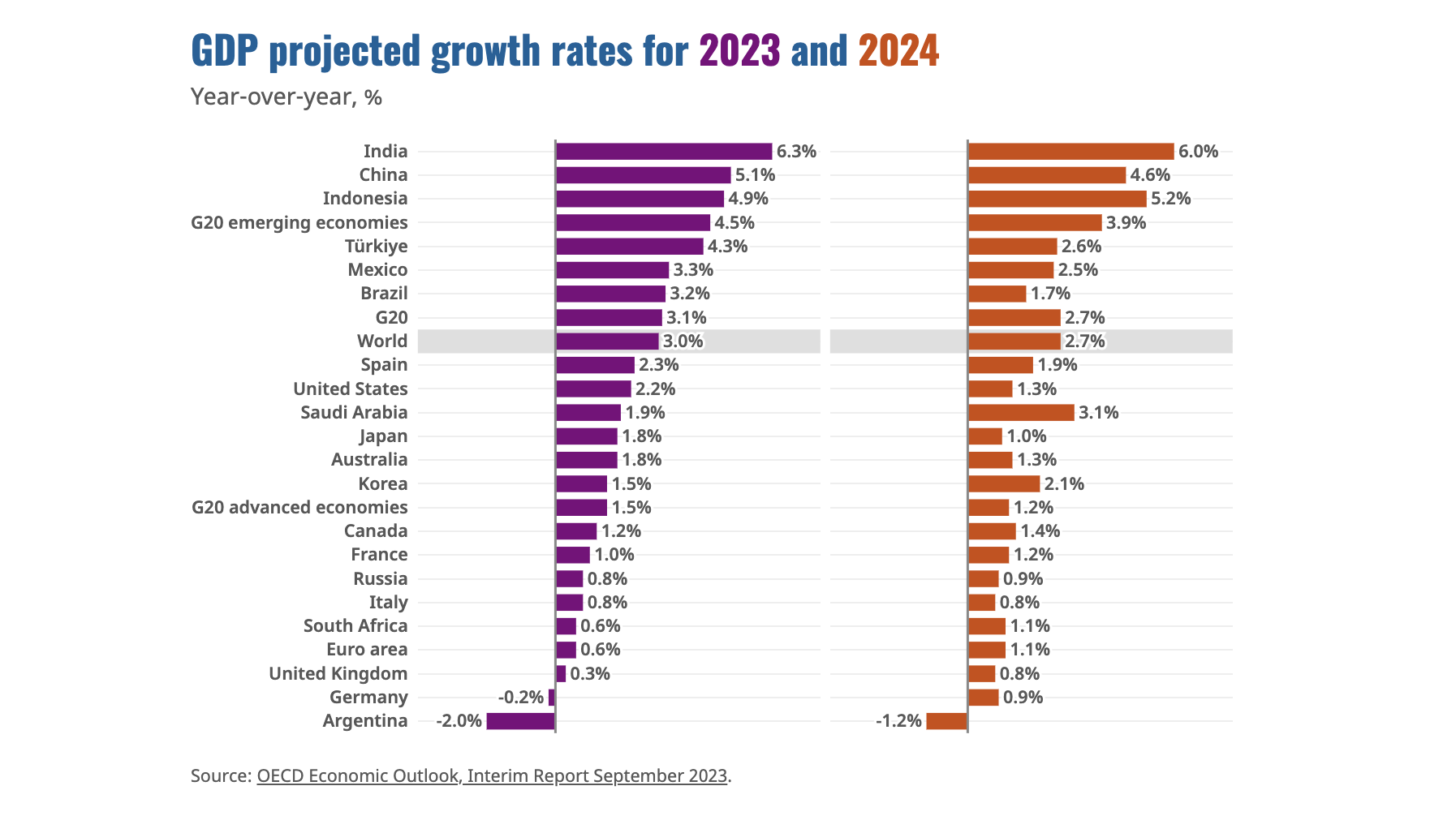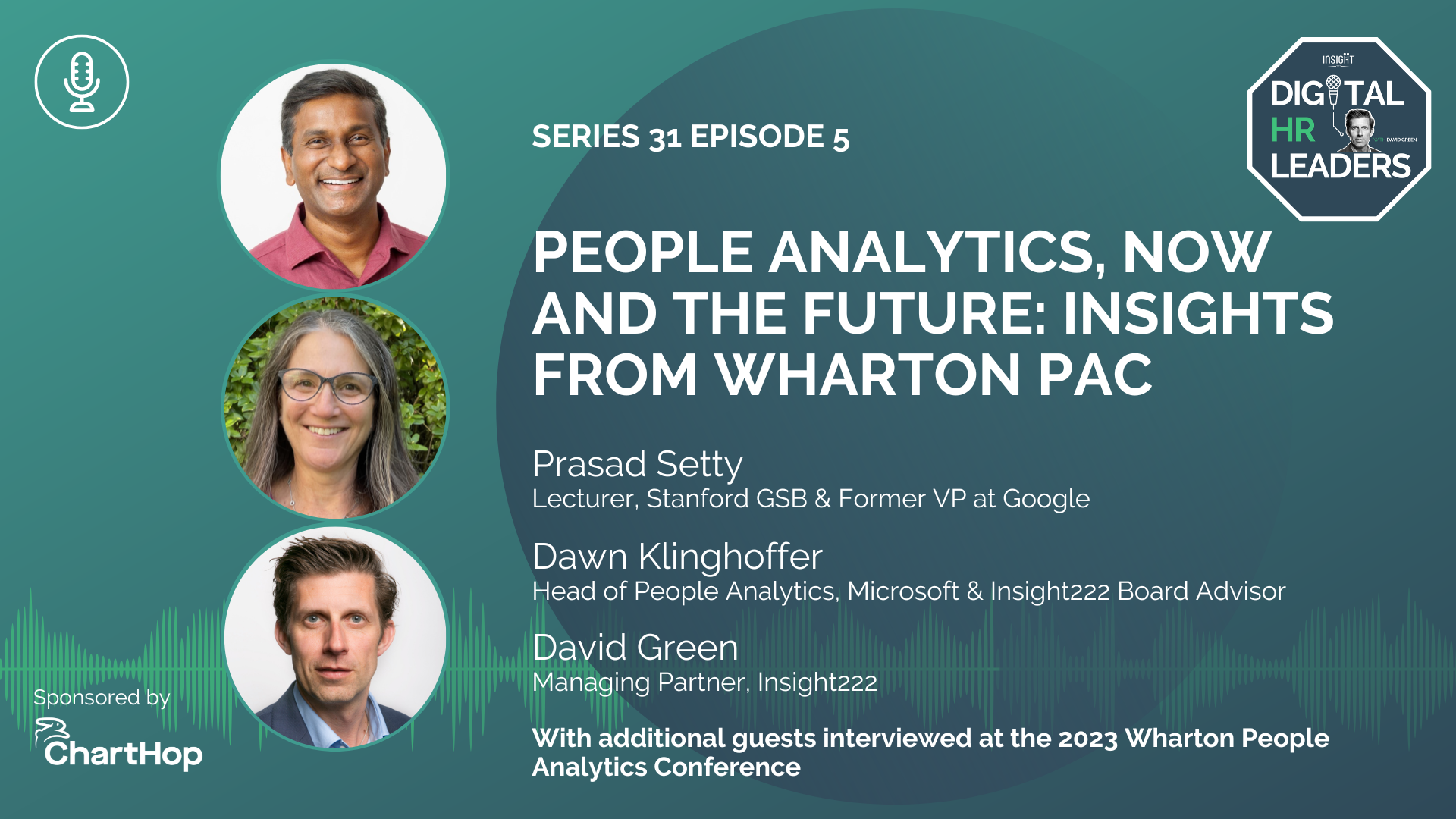Navigating Economic Challenges with Robust People Analytics
The aftermath of several global disruptions that we've felt over the past few years, namely the COVID-19 pandemic and the Ukrainian War, has undoubtedly had a significant impact on the state of the economy.
Economic projections for the end of 2023 currently point towards a declining global GDP growth rate of 2.7%. This is the lowest annual rate witnessed since the global financial crisis in 2008–09, barring the exceptional circumstances in 2020 due to the pandemic. As such, the lingering effects of these global disruptions, coupled with ongoing uncertainties, pose unprecedented challenges to CEOs and CHROs alike, testing their leadership and crisis management skills to the limit.
In fact, according to McKinsey research, in this volatile macroeconomic climate, Chief Finance Officers (CFOs) are taking decisive measures to stabilise and strengthen their organisations. They are strategically raising prices to expand margins and are making concerted efforts to reduce fixed costs.
However, amid a global economic climate marked by widespread cost-cutting measures, Insight222's 2023 People Analytics Trends Report, "Investing to Deliver Value: A New Model for People Analytics", uncovers a noteworthy trend – the persistent growth of HR analytics.
The research found that 90% of companies surveyed have either increased or maintained the size of their people analytics teams. Over half (51%) of these companies have expanded their people analytics teams, investing in their capability to derive meaningful insights from employee data.
In terms of future expectations, the prospects remain bright, as it was found that 98% of people analytics leaders predict that their function will maintain its current size or even grow in the coming 18–24 months. This ever-increasing commitment to HR analytics underlines the role it plays in strategic decision-making, particularly in times of crisis.
In fact, this growth can be seen even more clearly when comparing ratios from the previous year's people analytics report. In 2021, leading companies maintained a ratio of 1 people analytics professional for every 29 employees. However, despite the prevailing economic downturn, the current data reveals an increase in this ratio. Now, we observe that there is 1 people analytics professional for every 28 employees.
This trend not only underlines the vital importance of people analytics in effective talent management and organisational resilience but also further emphasises the robust expansion of this function even amidst challenging economic conditions.
The Resilience and Growth of People Analytics
The continued growth and vitality of the function become even more remarkable when we consider its invaluable role in supporting data-driven decisions during critical times such as the COVID-19 pandemic, the "Great Resignation," and economic downturns.
Navigating the Unchartered Waters of COVID-19
In the face of the COVID-19 pandemic, organisations found themselves in uncharted territory, compelled to make rapid and data-driven decisions to protect their employees and businesses. It changed how we work, where we work, and how we collaborate, and as such, people analytics became crucial in navigating this new world of work.
Organisations could make evidence-based decisions and adapt quickly to the changing environment by leveraging people data. From predicting employee turnover rates and sickness absences to identifying essential roles for business continuity, people analytics provided critical insights that helped leaders make informed choices during the pandemic.
So much so that in 2021, our Insight222 research found that 90% of CHROs admitted to data analytics being a fundamental part of their CHRO strategy.
Speaking to Prasad Setty, Former Head of People Analytics at Google, at the 2023 Wharton People Analytics Conference, Prasad highlights the significance of this transformation:
"Certainly the global pandemic forced the largest natural experiments that we have seen in terms of how and where and when people work. And certainly, there is a continued conversation about hybrid work or remote work or in-office work, but also about when people work and how they get together.
And when I was at Google, I was leading a response on the people side for COVID and thinking about the future of work, and we would talk about three outcome variables that were all important for us to solve for: productivity, both at the individual and team level; wellbeing, physical as well as mental; and then connectedness, how connected you are to the organisation and to the team. And all of those are important for long-term sustainability and the viability of the organisation."
Tackling the Challenges of 'The Great Resignation'
Just as the world thought it was emerging from the grips of COVID-19, another crisis hit: "The Great Resignation." The Bureau of Labor Statistics reported that in August 2021, 4.3 million employees quit their jobs – the highest number recorded since December 2000.
This phenomenon has been attributed to a combination of factors such as burnout and re-evaluating personal priorities during the pandemic. Nevertheless, as employees continued (and continue) to leave their jobs in record numbers, people analytics emerged and continues to emerge as the saving grace, not only for understanding the reasons behind employee departures but also for predicting future attrition.
Using predictive analytics, organisations have been able to identify likely future leavers and take proactive measures to retain valuable talent. Furthermore, skills gap analysis and skills-based workforce planning have also been essential in ensuring a resilient and agile workforce during these challenging times, anticipating and adapting to changing business needs.
Leveraging People Analytics During Economic Downturn
It is no secret that an economic downturn can put significant pressure on businesses, and often, tough decisions must be made to survive. In these situations, having access to accurate and timely people data becomes even more critical for making informed decisions.
HR analytics can play a vital role in managing costs, for example, through identifying high-risk employees and developing targeted retention strategies.
Take, for instance, the current state of the economy. With the rising cost of living and financial uncertainties, employees' financial wellbeing is likely to create stress and discontent among the workforce. Organisations have been able to take proactive measures to support their workforce during challenging times by gaining insights into employee wellbeing and creating personalised solutions that promote employee retention and engagement.
Moreover, people analytics can also aid in strategic workforce planning, identifying critical roles and skills needed to support the business through economic challenges. Organisations can make better-informed decisions about talent management strategies by understanding which employees have the right skills and competencies to thrive in new ways of working or roles.
The Role of HR Analytics in Shaping Organisational Strategies
HR analytics isn't just a reactionary tool used for crisis management - it's an integral part of shaping organisational strategies and long-term planning. It allows organisations to anticipate and respond to changing employee needs, market trends, and business demands.
In CEO leadership and CHRO strategies, people analytics have emerged as a pivotal factor in driving data-driven decisions, particularly during challenging times. It shifts decision-making from being intuition-based to evidence-based, ensuring that decisions are objective, fair, and aligned with the organisation's goals.
The Top Five Areas Where People Analytics Adds Value. Source: Insight222 People Analytics Trends 2022
For CEOs, people analytics provides insights into workforce productivity, employee engagement, and morale, enabling them to steer the organisation effectively. It allows them to identify potential risk areas, anticipate changes, and make strategic decisions to safeguard business continuity.
For CHRO strategies, people analytics helps identify trends in employee behaviour, predict attrition, and understand the drivers of employee engagement. This aids CHROs in shaping effective HR policies, practices, and initiatives and delivering a superior employee experience. It also assists in identifying skills gaps, planning for future workforce needs, and making informed decisions about talent acquisition and development.
Ultimately, people analytics empowers CEOs and CHROs to navigate through crises and uncertainty confidently, ensuring organisational resilience.
Empowering Organisations for a Resilient Future
As we reflect on the role of people analytics during various global disruptions, it is evident that this practice has come a long way. From aiding in crisis management and navigating economic downturns to shaping organisational strategies, people analytics has proven its value and resilience.
As we continue to face unprecedented challenges, organisations must recognise the importance of investing in people analytics capabilities to drive future growth and success. It is a critical tool in talent management, mitigating risks, and making data-driven decisions that support employees' wellbeing and the sustainability of business operations.
It's not just about surviving but also about thriving amidst challenging times, and people analytics is the key to unlocking this potential. So, as organisations look towards the future, they must not underestimate the power and potential of people analytics in achieving long-term growth and success.
Pre-register For Our Insight222 People Analytics Trends 2023 Report For Early Access
In our latest research, the Insight222 People Analytics Trends 2023 report, we delve into the evolving landscape of people analytics, drawing insights from over 270 companies, representing 4,800 practitioners and 16.3 million employees. Discover our Leading Companies Model that will empower people analytics to deliver greater value to the organisation.
Pre-register for our Insight222 People Analytics Trends 2023 report to learn how to invest and deliver business value through people analytics. Gain early access on Oct. 31st 2023!







